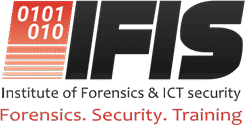When the finance manager of a Kampala-based agricultural NGO resigned suddenly, no one suspected a thing. He left with glowing references. Six months later, a whistleblower’s anonymous letter changed everything. The NGO had lost UGX 1.2 billion. Quietly. Cleverly. And over three years.
This is the kind of case you master when you study the ACFE curriculum. But theory alone is not enough. Let me walk you through how a Certified Fraud Examiner (CFE), trained under the ACFE framework but sharpened by local insight from the Institute of Forensics & ICT Security (IFIS), would unravel such a scheme from start to finish.
Financial transactions and fraud schemes: Lifting the hood
The investigation began with accounting basics. We pulled the balance sheets, income statements, and cash flow reports. Our CFE knew how to spot anomalies in both cash and accrual accounting systems, and more importantly, understood that Uganda’s smaller entities rarely follow IFRS in practice.
The trick? The ex-finance manager inflated supplier payments through false billing schemes and then laundered the difference through third-party M-Pesa accounts. Skimming? Yes. Larceny? That too. The CFE used the fraud tree to classify the schemes: billing, reimbursement fraud, and payroll ghosting. Classic asset misappropriation.
Law: From red flags to legal red lines
Theory teaches that fraud is a legal concept. But practice teaches that how you handle the evidence determines whether the case holds in court. Our examiner had to understand the law of misrepresentation, concealment, and perjury, and how to secure admissible evidence without violating Uganda’s Evidence Act or the suspect’s rights.
The fraud was also potentially criminal under the Penal Code, civil under the NGO Act, and administrative under the employment contract. Multiple legal channels. One strategy.
Investigation: Chasing ghosts through bank records and baselines
The CFE began by developing a fraud examination plan, starting with predication, ensuring confidentiality, and collecting both digital and documentary evidence. One Excel file revealed suspicious salary adjustments. But that wasn’t enough.
Our trained investigator conducted interviews, starting with HR, moving to operations, then confronting the suspect in a carefully staged admission-seeking interview. Signed statements were obtained. But the real breakthrough? A signed delivery note for fertilizer to a nonexistent district farm.
We used data analysis, Benford’s Law, and trend analysis to flag manipulated values. Then traced illicit transactions through mobile money statements, bank records, and informal “banking” agents used to hide UGX 740 M.
Digital forensics and covert operations: The silent heroes
The suspect had wiped his company-issued laptop. But with digital forensic imaging, we recovered deleted WhatsApp chats, revealing collusion with two suppliers. A covert visit to the supplier’s “warehouse” revealed nothing but a kiosk and three cartons of expired herbicide.
Everything was documented. Legally. Securely.
Fraud prevention and deterrence: Fixing the leaking ship
After the dust settled, it wasn’t enough to close the case. The organization had to rebuild. The CFE recommended:
a) An anti-fraud policy
b) Regular fraud risk assessments
c) Training staff on the fraud triangle, pressure, opportunity, rationalization
d) Building a stronger tone at the top
Internal control weaknesses were mapped using the COSO framework. Whistleblower channels were established, and a fraud risk dashboard was implemented.
Ethics, governance, and fraud risk management, the real legacy
The suspect was prosecuted and ordered to pay restitution. But the real win was institutional. The board redefined its governance model, clarified management responsibilities, and trained auditors on professional skepticism and conflict of interest detection.
Our CFE concluded the case with a fraud examination report that not only documented findings but also offered actionable recommendations. No fluff. Just facts.
The IFIS advantage
The ACFE curriculum is your foundation. But IFIS makes it real. We train you to understand local evidence laws, police procedures, and court systems. We teach you how to survive high-stakes interviews and present to a court that does not care about your credentials, only your credibility.
In our training, you don’t just read about cyberfraud, you investigate it. You don’t just define corruption, you expose it. And when it’s time to testify, you don’t just explain evidence, you own the courtroom.
This is how you transform from a fraud examiner to a fraud fighter. Case by case. Asset by asset. Truth by truth.
Are you ready?






